
On Saturday, April seventh, Tatter will be hosting Rose Pearlman for an in-person workshop learning the fundamentals of punch needle. During the class, students will learn with the highest quality tools to create meditative loops of luxurious wool that fit snugly together, creating unique shapes and textures which have limitless opportunities for design. From wall hangings, soft goods and even accessories, rug hooking can create a large variety of art and functional objects using the same foundational materials and knowledge. We spoke with Rose about her practice and her love of punch needle: you can read our conversation below.
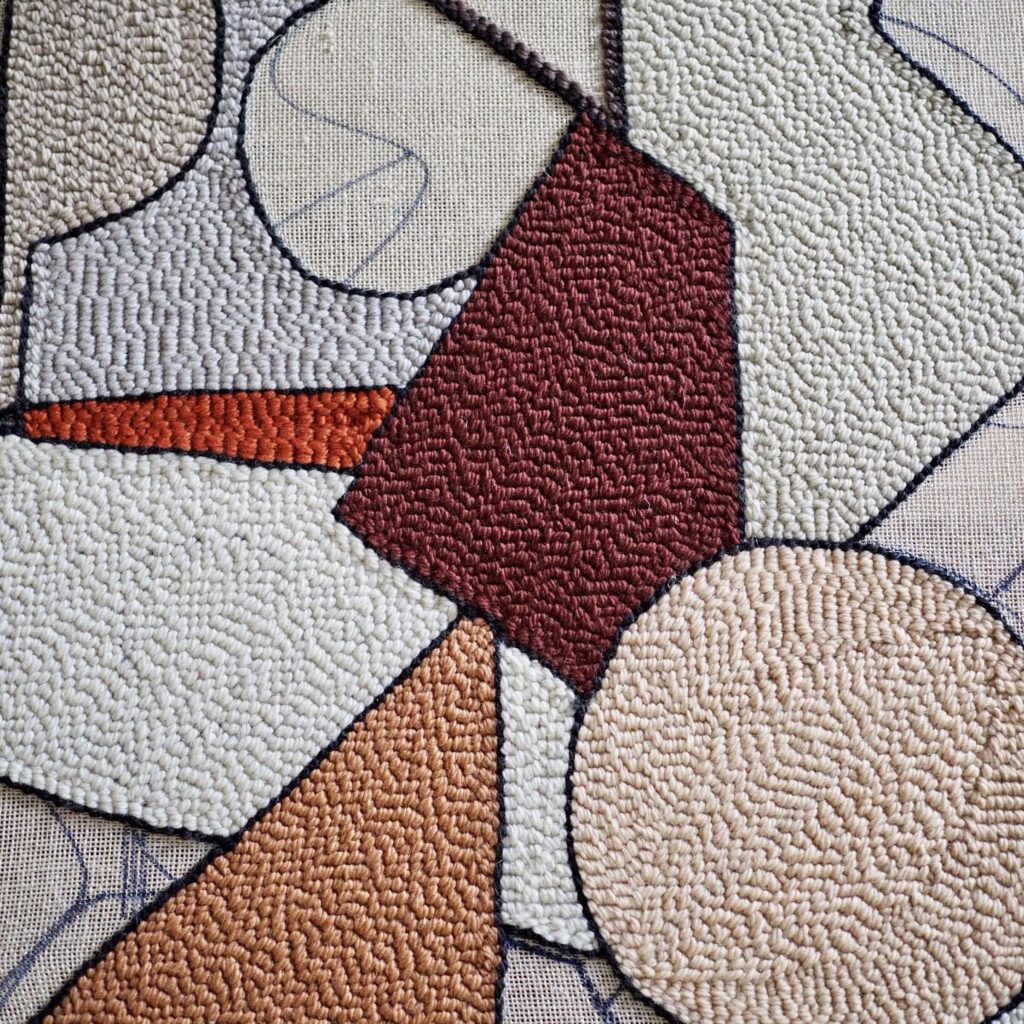
How did you get started with punch needle?
My mother is a rug hooker, but she’s first and foremost an abstract expressionist oil painter. When she had children, though, she could not continue to do studio practice. The fumes are toxic, she could barely ever get to the studio, all those logistics totally changed. She’s a person that always has to have something in her hands and so she needed to find another way to keep her artistic expression going. So she did research into other kinds of art forms and figured she was probably going to go with some form of fiber craft. Because she was living in northern Vermont, and rug hooking is such a New England and coastal craft, even this little town where we lived had rug hooking supplies. I still call punch needle rug hooking, because traditionally it is just rug hooking. It’s only in the last decade that they started calling it a punch needle. She uses the tiny crochet hook with a wooden base, so she actually has to go underneath, feed the fiber from the backside, pull it up through the front, make a loop, twist the hand, release the loop and go back in.
She’s just as fast as I am with a punch needle, which was actually invented as just a faster way to hook a rug.
My mom repurposes clothing, she finds wool and she strips it down with a stripper machine. So these amazing rugs were just in our living room growing up, often leaned up against the wall, and it took her sometimes years to complete one because she worked and she had a family. But she needed it. So it was a TV craft, a practice that she had she could always go back to. As a kid and as a teenager I was witness to this, I lived around it, it was always present, and I had nothing to do with it. No questions about it. No interest at all. It wasn’t until I had my own kid and I couldn’t get to my art practice, which at the time was painting. It was too time consuming, I was living in a small New York City apartment, it couldn’t be something that I had to constantly clean up or put away. So my mother just sent me rug hooking supplies and I just took to it.
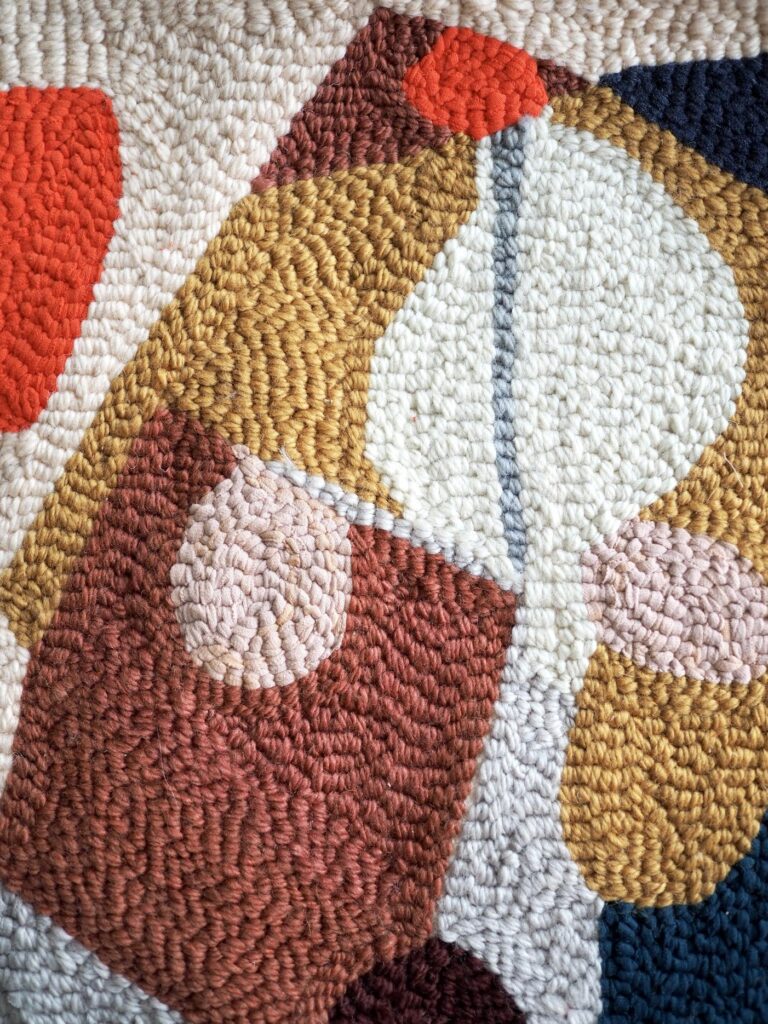
Something that really stands out in your work are the incredible color stories you put together. How do you go about that?
Color is so important to me, and I can’t really tell you how the colors work together. I just feel with fiber. It’s different from painting, the way the color absorbs the light or doesn’t. I never punch in the evening or by artificial light because it changes everything. I know that sounds picky!
No, that totally makes sense. It’s interesting with fiber, because with paint there’s much more blend and bleed there. But you don’t usually get that with fiber.
Exactly! When I used to make paintings, I would mix colors and change my mind all the time. With punch needle, because you go so much slower, you have a lot of time to think about each color, to feel how it’s working with the rest. And then if it’s still not working when you’re done, you just know you can change it and that’s so freeing. It’s not like painting where you think “Oh, you know what? This should be a little brighter,” and you immediately tweak it. With yarn, it makes you more thoughtful in the process with the color of whatever fiber you’re using. You assemble it all in advance so you have the colors and it becomes all about the quantity, the proportions. You have to portion off your fiber sometimes, to see how it looks. And I’ll often sketch it out on the cloth and lay the yarn directly onto it.
I love going to a thrift or second hand store finding someone’s partially finished needlepoint or punch needle. Oftentimes, especially with the older the kit is, it’ll have a swatch of each of the yarns tied to the edges so that you can see them next to each other. It’s so wonderful because you can see the artist, who you will never meet, whose name you will never know, you can see the way that they’ve been comparing their strands.
Yes! When I make rugs I like to cut little pieces off of the yarn I’m using to see how it all works together. There’s a lot of thought that goes into colors. And sometimes it’s just a feeling like it’s just not working and you can’t really tell why. I use seal harbor Rug Yarn, and they make two hundred and fifty different shades. So the tonal qualities, it’s just all you could ever want. So, sometimes it’s just completely overwhelming to choose because there’s so much choice. That’s why I also love working with the remains of my closet where I only have a limited number of colors and I have to make whatever I can with however much I have. And somehow I have to make it work. That’s where I think I’m the best, when I don’t have too much choice. When I go to a thrift store and I see some bright T-shirts, I know I have to make them work together. That’s when I shine, finding proportion and balance with limited options.
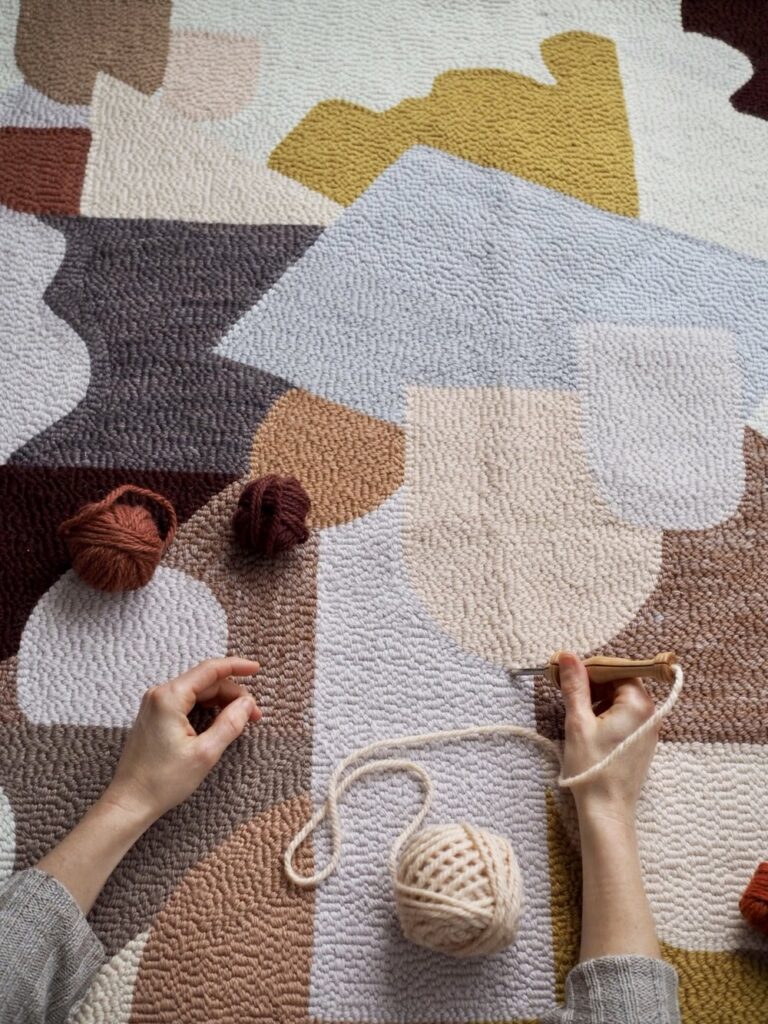
Is there anything about your practice that you’d like someone to know if they’re thinking about picking up punch needle? What sort of advice would you give to somebody who might be feeling daunted by picking up a new craft?
I think punchneedle is so welcoming to beginners and so forgiving. I always tell people to come to my class not expecting the piece you make there to be your favorite piece ever. If what you do in this class gets pulled when you get home, let this be practice. People put so much pressure on themselves with design when it could be just a tactile surface, a learning experience. And how beautiful is that? So I would say do not put the pressure on yourself, when you’re learning, to make some sort of masterpiece. When you start out it’s just about creating this plush, delicious surface and the meditative process that you let yourself ease into. Once you let go of the images you may have seen on social media, it really is something that you can just master within an hour or two. I teach children how to do this and there’s not a lot of technical skill involved. Of course, you will continue to get more comfortable and faster over time. But yeah, it’s something that you can pick up right away. And I think that is wonderful.
Do your children do punch needle?
Yes! I have two children, a 17 year old son and a seven year old daughter. My son got really into it. And it’s wonderful because it takes kids a long time to fill in a whole frame with punch needle. When he was ten he did the outline and he filled in some parts, but left others empty. We turned it into a pillow, and my daughter sleeps on it every night and has since she was one year old. You would think that it was structurally not very sound, but it’s held up! She doesn’t punch needle yet but she likes it every time I call her over and say “these colors have to go.” She’s the frogger extraordinaire. It’s so enjoyable for her, pulling it out, and then equally enjoyable for me to go back and redo the section.
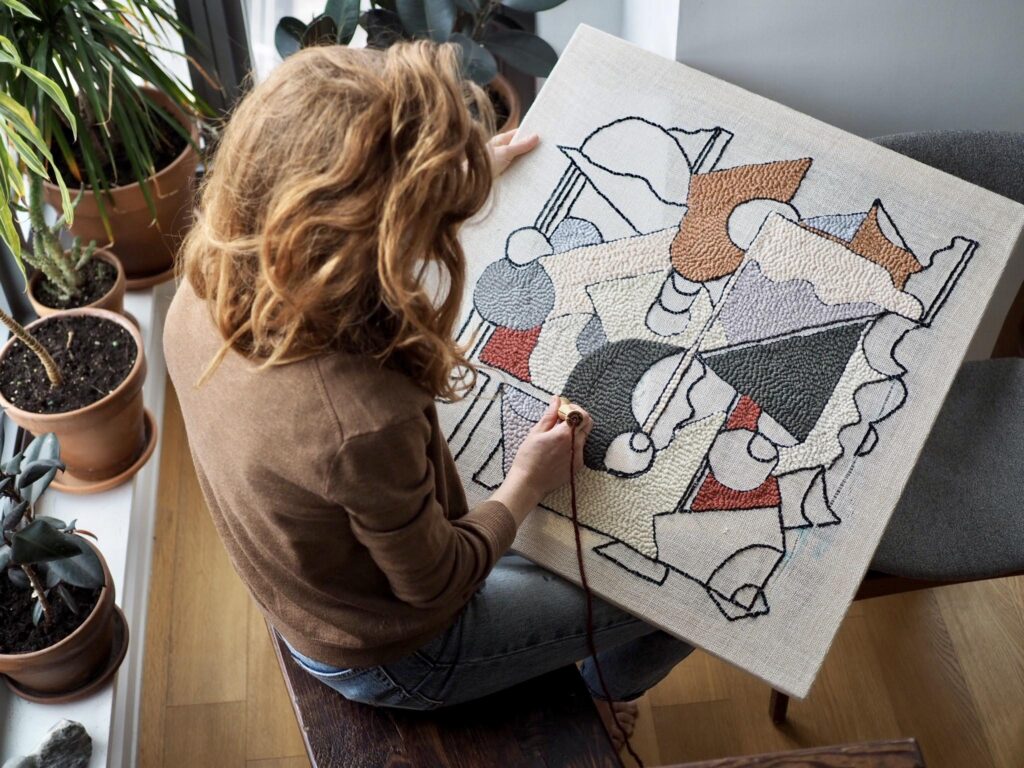
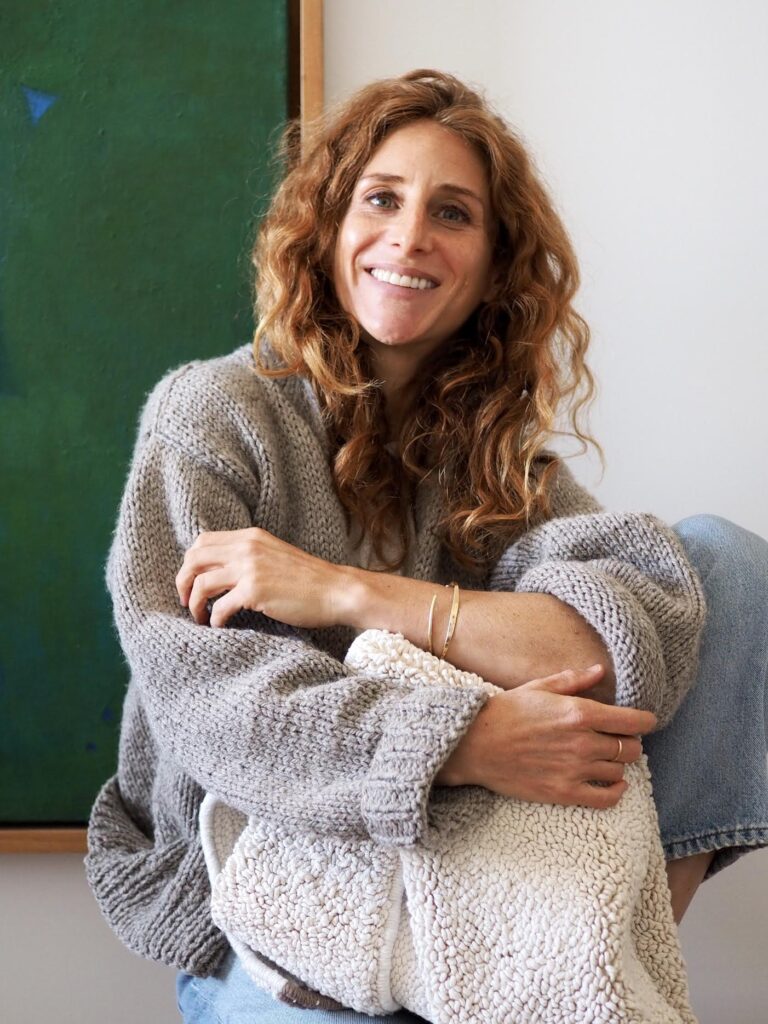
Rose Pearlman is an artist, teacher, and textile designer. With a background in fine arts and a love of well-designed, functional objects, her creations blur the lines between art and craft and push the boundaries of both with non-traditional techniques and materials. Rose’s hooked rugs and craft tutorials have been featured in magazines, galleries and numerous online design sites. Her first book, Modern Rug Hooking, was published by Roost Books in 2019, and second book ‘Making Things” will be published by Hardie Grant in Spring, 2024.
You can find Rose’s work here.
